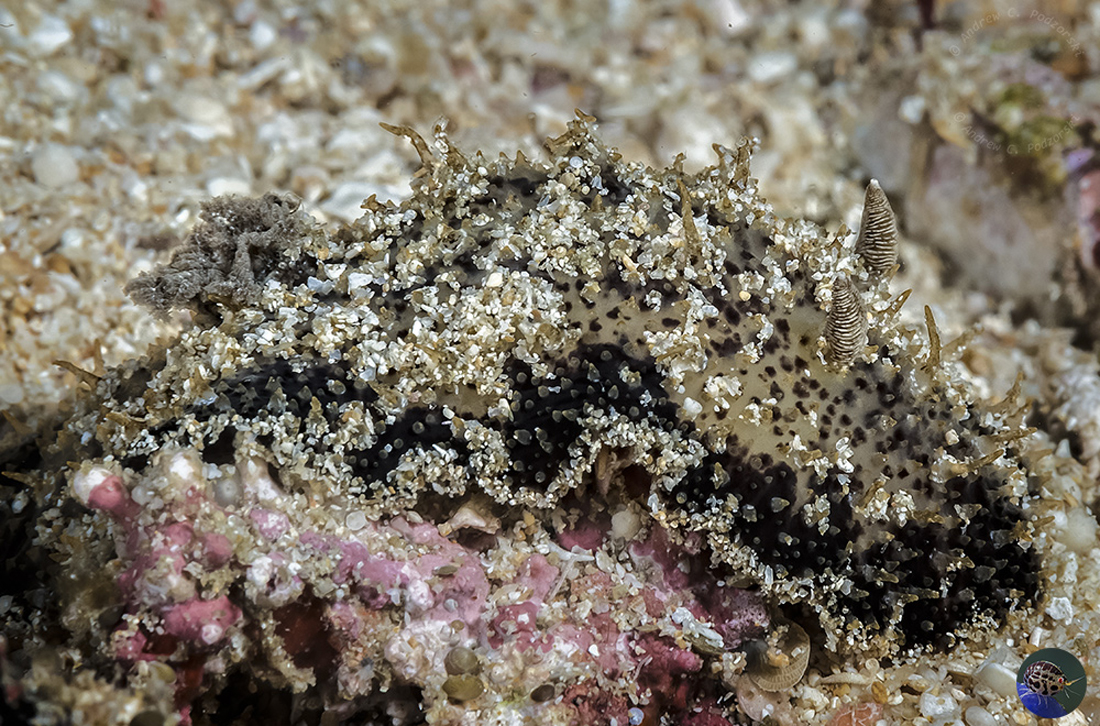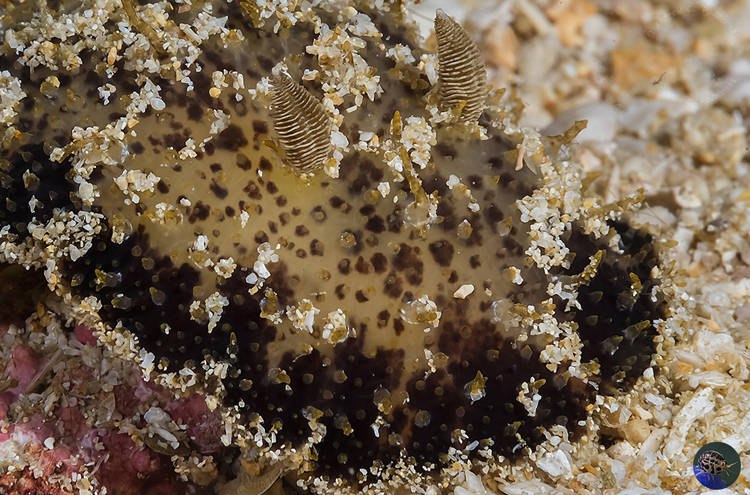 |
Thordisa villosa
Images courtesy of Andrew PodzorskiTriton Bay, PNG
Image courtesy of Andrew Podzorski
 | Thordisa villosa sp. (Alder & Hancock, 1864) When most of us think about nudibranchs, we think about all those brightly colored flamboyant species. We rarely think about those; well how do I say it with a little compassion - "ugly" cryptic species. That said - when you stop and think about it - the evolution of these species crypsis, is as unique as those color strategies used by flamboyant aposematic species. When I study this somewhat rare species, I am amazed at its disguise and how it hides on sandy bottoms. This interesting example of crypsis seems to be a combination of mantle tissue colorations and the ability of its conical papillae (which is the feature this species was named for) to hold onto grains of the sand, making this species almost invisible. Maybe that why it is so rare. I am not sure if the papillae are caryophyllidic (bearing a series of spicules about their base) but his would explain the interesting ability to hold onto flacks of sand. Combined with the black specks on the dorsum they create an amazing costume to hide under. Joshua Alder & Albany Hancock hit it out of the park when they named this species "villosa", but I am not sure they truly understood the functionality of these very specialized dermal tissues. Great Photos Andrew and thanks for sharing! Reference:
Alder, J. & Hancock, A. (1864). Notice of a collection of nudibranchiate mollusca made in India by Walter Elliot Esq., with descriptions of several new genera and species. Transactions of the Zoological Society of London, 5: 113-147. |
Dave Behrens
Sammamish, WA 98074
Jul., 2022
Send Dave email at davidwbehrens@gmail.com

With the travel restrictions imposed by Covid, and finding out how little money is donated to charities supporting reef conservation, I decided to use my knowledge and photos to create a website to encourage people to donate to Greenpeace, Sea Shepard, Conservation International etc. Reef Image-Stories - Help save our reefs! Camera: Nikon D750 with a Nikon 105mm macro objective in a Seacam housing with Seacam Seaflash 100D strobes.
Send Andrew email at acpuhl@outlook.com |

|
